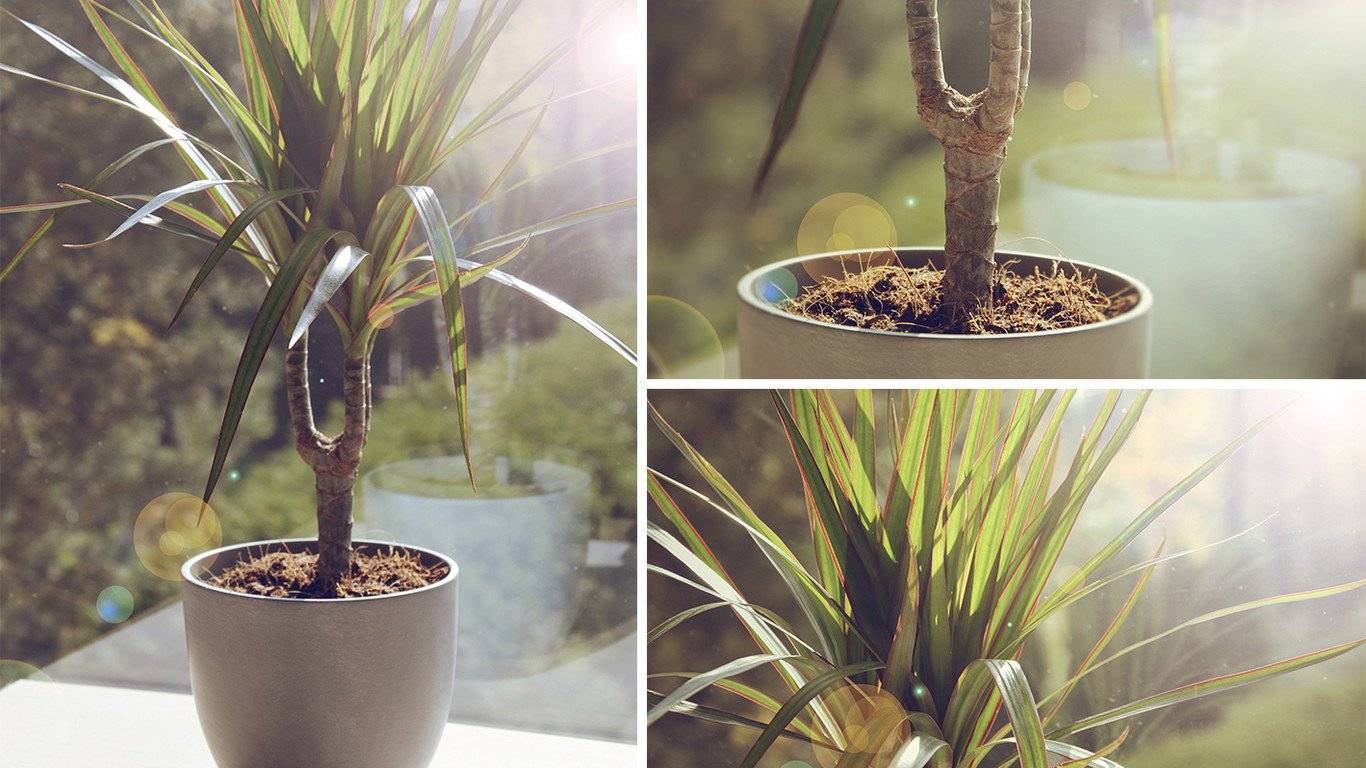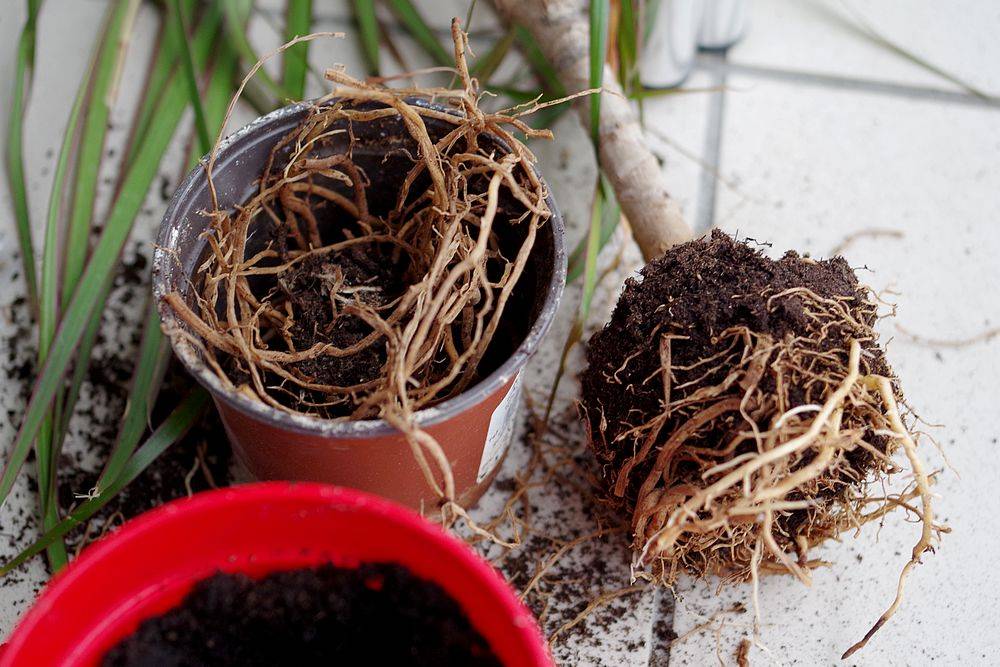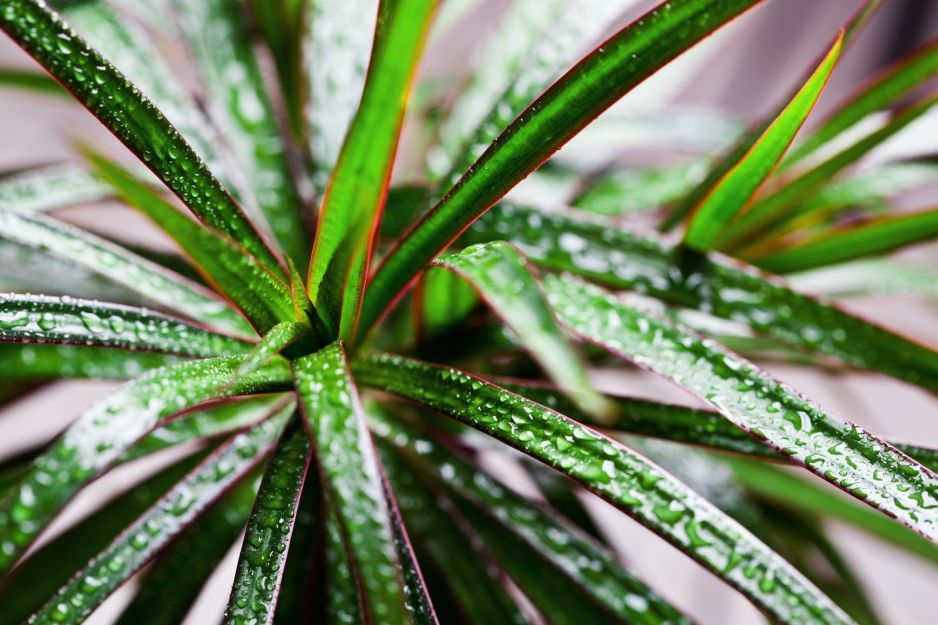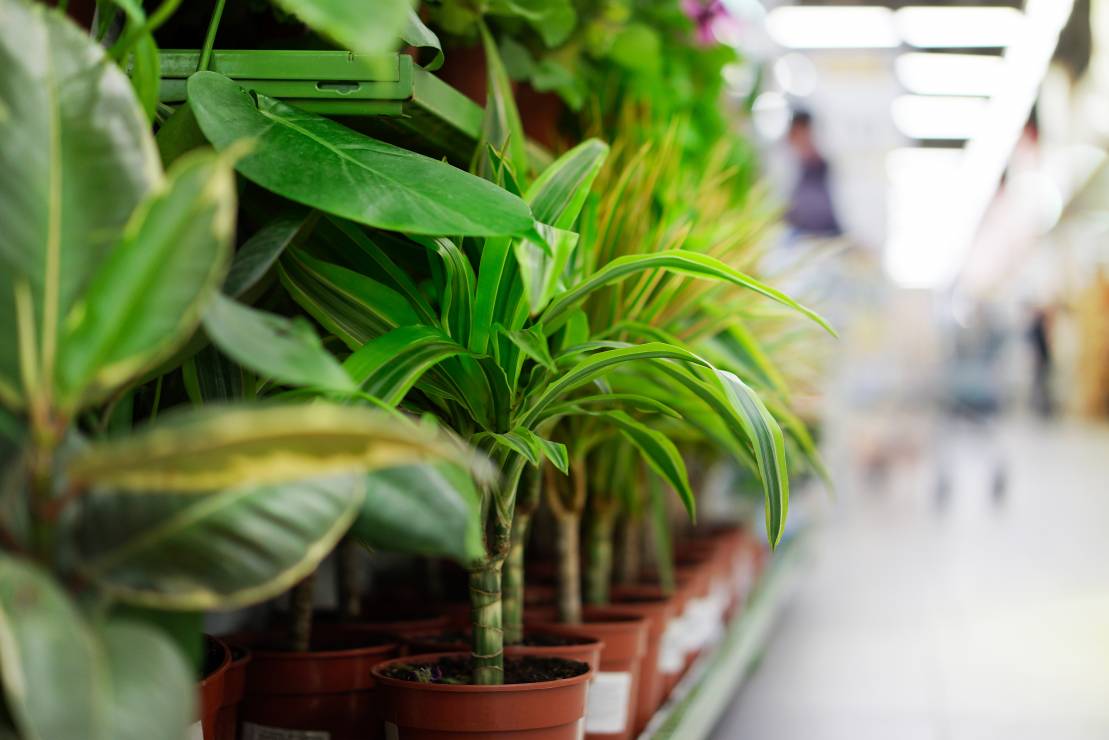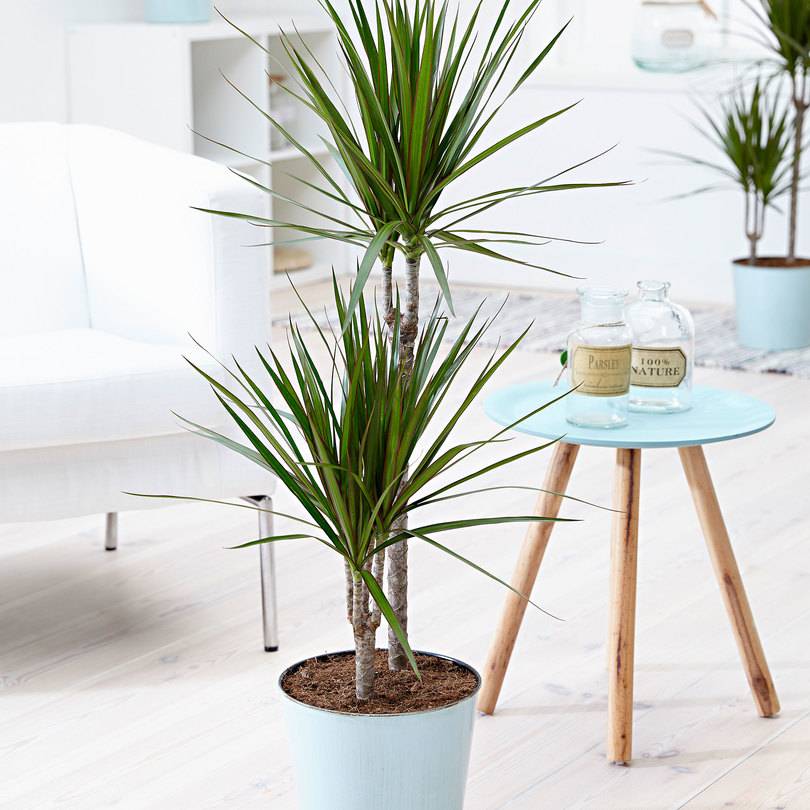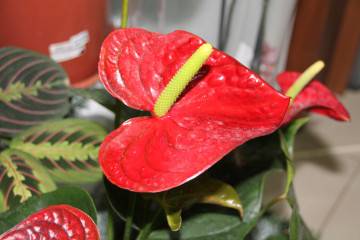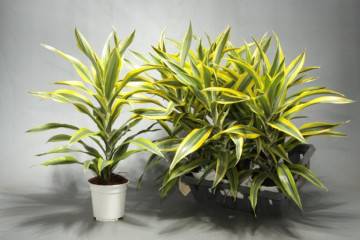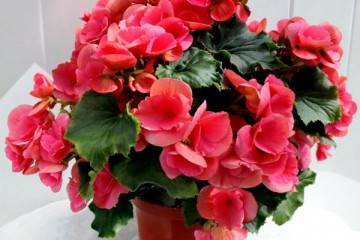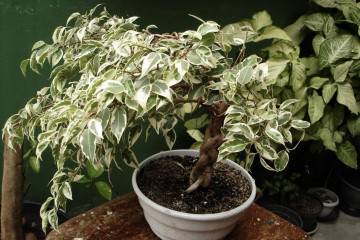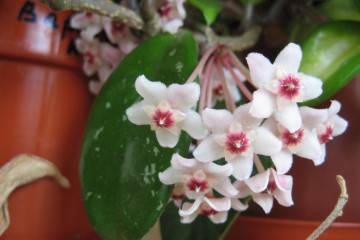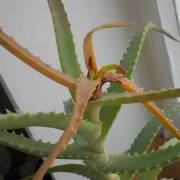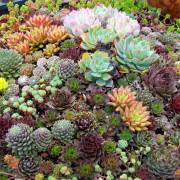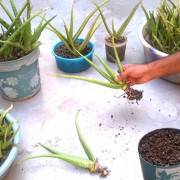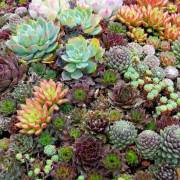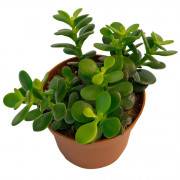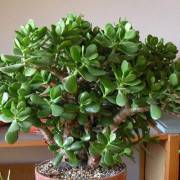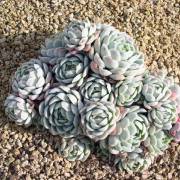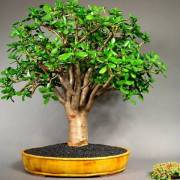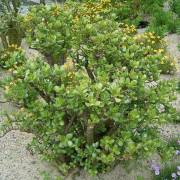How to transplant Dracena at home
Content:
Dracaena, like many other indoor plants, grows naturally in the subtropics. For full-fledged growth within the framework of a dwelling, it needs to provide the most favorable growing conditions. To do this, you need not only to monitor watering and air humidity, but also to timely replace the soil and pot as the dracaena grows.
When a transplant is needed
Replacement of soil and capacity can be both planned and emergency. There may be several reasons for this procedure:
- the size of the root system does not correspond to the volume of the pot;
- the soil is infested with pests;
- the amount of nutrients in the soil is insufficient;
- the need for a transplant after purchase.
The need may also arise if the conditions were not met initially during landing. For example, a pot is incorrectly selected or there is no drainage.
Another reason may be the need to plant plants growing in the same pot. A long period of co-growth of large plants in one container is undesirable. Pest damage and root rot can be attributed to emergency reasons.
How often to replant
Replacing the soil and volume of the pot should be carried out annually if the plant is less than five years old. Older specimens require a transplant every three years. These terms are applicable if the dracaena has been provided with full-fledged conditions for growth.
How to choose soil and pot
Indoor plants are limited in space by the size of the pot. For this reason, its size should be increased as the dracaena grows rapidly.
Dracaena does not tolerate waterlogging. It is better to choose a container made of clay or ceramic. Particular attention should be paid to the presence of drainage holes. There should be at least three of them, depending on the size of the pot.
The primer can be purchased at a specialist store. Its composition is selected according to the requirements of the plant. To prepare the soil with your own hands, you will need peat, humus and charcoal. These ingredients are mixed with garden soil.
Before planting, it is necessary to decontaminate the container and soil. Wash the pot thoroughly with hot water. The soil can be calcined or watered with a manganese solution.
Preparation
Two days before transplanting, the dracaena should be watered. After that, it will be easier to get it out of the pot, and the plant will receive the necessary portion of moisture. This will make it easier to transfer the change of place and accelerate the survival rate.
Immediately before the procedure, the plant is removed from the pot. To do this, it is better to put the container horizontally and scroll a little, gently tapping on the walls. Then, when some of the soil has been extracted, you can easily remove the dracaena by pulling on its trunk.
The root system must be carefully examined before planting. If dry or damaged roots are present, they must be removed.
Dracaena: home transplant
The transplant must be done carefully and consistently.This process consists of several steps:
- the creation of a drainage layer;
- filling with prepared soil by 1/3 of the volume of the container;
- immersing the root system in a pot, straightening the roots, if possible;
- filling the container with the remaining soil.
It is better not to tamp the top layer of soil, this will contribute to better air and water permeability.
This technology is also applicable if there is a need to root the cutting to obtain a new specimen.
Knowing how to transplant dracaena is not enough. It also requires knowledge of how to provide her with the care she needs.
Care
For active growth and development of dracaena, special conditions are required. This tropical plant needs an air temperature of more than 25 ° C and a humidity of at least 70%.
It is almost impossible to provide such conditions in an apartment or office. But still, you can create as close as possible, observing a few rules:
- Watering is carried out only with settled water at room temperature. After transplanting, moisten the soil after drying out, but not allowing it to become overmoistened.
- Spray the leaves regularly with warm water and wash them periodically.
- 1-2 weeks after transplanting, dracaena can be fed with complex fertilizer for growth. In a specialized store, there are feeds for this particular type of plants.
Observing all the necessary conditions, it will be possible to expect that the transplanted plant will quickly take root and will be able to grow. Proper care is also required.
Transfer after purchase
A plant purchased from a store requires replacing the soil and pot. As a rule, the container in which it was purchased is undersized. The soil also does not meet the requirements, it often contains too much peat and is not able to retain moisture.
A newly acquired plant should be planted using a technology that is no different from that recommended for existing specimens. But you should not start this procedure right away. It is necessary to give the plant time to acclimatize, this period lasts 5-6 days.
Transplant errors
Violation of the planting technology can lead to plant disease or even to its death. There are several mistakes to avoid:
- neglect of the creation of a drainage layer;
- improper selection of soil and capacity;
- inappropriate time for transplantation.
Another mistake concerns cases when the tree has to be replanted due to soil contamination. Residual soil must be carefully removed from the root system, and leftover drainage must not be used. Otherwise, replacing the soil and container will not help get rid of the infection.
Only by observing all the conditions for transplantation and care, you can achieve full growth and development of dracaena. Humid air and adequate watering are also essential.
A flower grower should know how to transplant a dracaena at home, taking the necessary steps step by step. The main thing is to be careful and to approach the process responsibly.
This spectacular palm tree can decorate any home and become a highlight of its interior.
